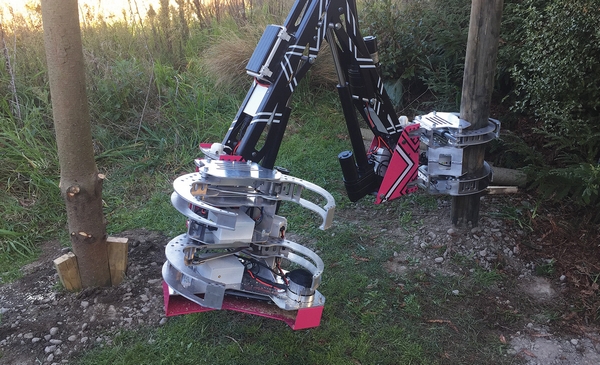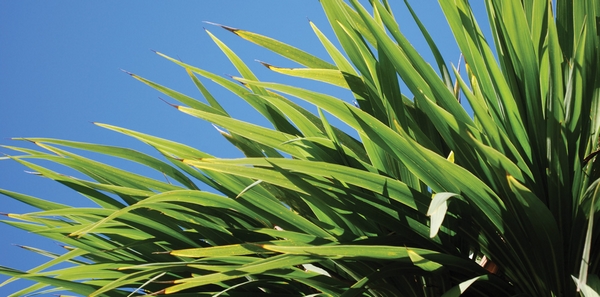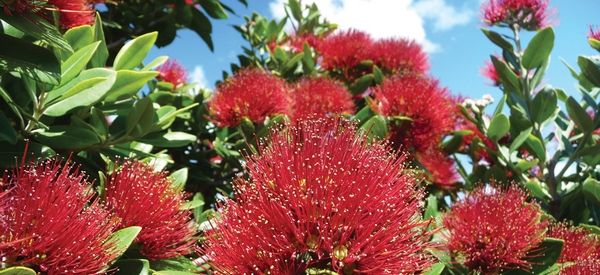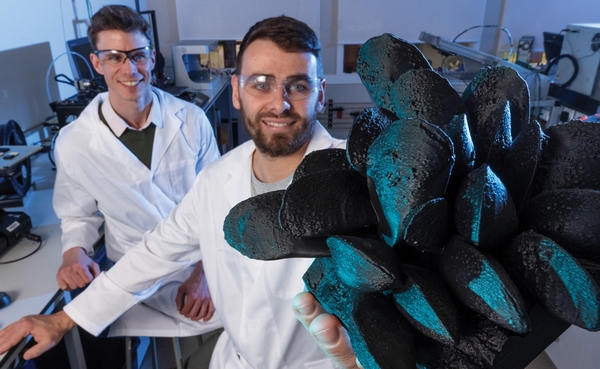Scion’s international and national reach is wide and deep. Through multi-disciplinary collaborations and networks our scientists are at the forefront of the latest thinking, novel approaches and technological advances. Maintaining and building on these linkages is critical for Scion to remain innovative and competitive in the domestic and global markets. Our presence and influence in key networks is well recognised as shown in the examples below.
Collaborating with VITO to produce bioaromatic polymers from lignin
Scion and VITO (Flemish Institute for Technological Research in Belgium) are in the second five-year term of their formal collaboration agreement. The collaboration includes a focus on biomass processing (especially lignin and hemicellulose), joint research on renewable and recyclable materials (with an emphasis on plastics and biopolymers) and scale-up of these technologies.
A specific collaboration is structured around the conversion of wood lignin into valuable bioaromatic chemicals that could replace petrochemicals in materials such as resins, adhesives, foams and coatings.
Scion and VITO have been working on lignin-derived bioaromatics since 2010. Together, the organisations are co-funding postdoctoral researchers that split their time between VITO in Belgium and Scion in New Zealand. Three postdoc fellowships have been funded to date with the fourth to start in September 2021.
Scion brings its expertise in wood chemistry, lignin extraction and separation, and chemical characterisation of products, which complements VITO’s experience with technology scale-up initiatives.
Scion’s Dr Kirk Torr and Dr Elias Feghali, the first joint postdoctoral fellow, have both been appointed to the science advisory board of a VITO-led project that seeks to set up a unique pilot infrastructure platform for innovative catalytic biorefinery of wood and lignin into functional biobased aromatics.
This work is part of the VITO LignoValue Pilot initiative to design a functioning pilot line in Flanders to produce bioaromatics from lignin/wood. Such a pilot-scale demonstration is crucial to de-risking an innovative ‘lignin-first’ biorefinery.
“Scaling-up from lab to pilot plant has been a major challenge for Scion in our lignin-based research. It is a privilege to contribute to VITO’s industry leading projects, and it’s giving us an enviable opportunity to learn from their experience and expertise for our own biorefinery aspirations,” says Dr Torr.
The goal is development of a new biochemicals export industry in New Zealand. Extracting maximum value from underutilised forestry residues would support more on-shore wood processing and nearly double sector exports utilising the existing forest estate. As such, forest owners, businesses and companies along the entire forestry value network would benefit, as would local and regional government.
Tissue culture techniques for 21st century forests
Scion is collaborating with the New Zealand forestry industry and global experts to automate tissue culturing to enable new, improved radiata pine genotypes to be deployed more quickly and efficiently.
To achieve this, Scion is working with Forest Growers Research Ltd and international science partners Georgia Institute of Technology (USA) and the Natural Resources Institute of Finland.
Current tissue culture and propagation methods in forestry are labour intensive and take time. This limits the forestry industry from taking full advantage of the benefits of new radiata pine genotypes. The focus of the project is automating the somatic embryogenesis process using temporary immersion bioreactors. A first successful regeneration of radiata pine somatic embryos using the bioreactors has been achieved.
The forest industry will benefit from the greater application of varietals of elite genotypes, whether the end goal is timber production or carbon sequestration.
The project is funded by the Forest Growers Levy Trust and the Ministry of Business, Innovation and Employment.
Tree-to-tree robot
Scion’s tree-to-tree robot may have a home in Canadian forests helping to prevent and mitigate wildfires.
Scion has been working with FPInnovations, a private not-for-profit organisation that supports the Canadian forest sector, and design and engineering consultants inFact to design and build an improved robot with a chainsaw.
The robot has two arms equipped with mechanical jaws that allow it to ‘swing’ from one tree to another. Tools can be attached to the base of the jaw system allowing the robot to carry out forestry operations on hard to access, uneven ground.
FPInnovations recognised the potential for the robot to prevent and mitigate wildfire in Canadian forests. Slow-growing black spruce dominates Canada’s forest. Even though most trees are small (15 cm diameter), they are very flammable. Operated as a remote-control chainsaw, the robot can be used to thin the trees around forest communities, reducing the amount of fuel for wildfires and the intensity of any wildfire.
Beyond Canadian forests, the rugged, functional robot has potential thinning applications in New Zealand’s and the world’s forests.
The tree-to-tree robot was originally conceived at Scion around 15 years ago to revolutionise steepland forest management and harvesting. Original development of the robot was in partnership with the University of Canterbury, Future Forests Research and the Ministry for Primary Industries.

Consolidating Cordyline for green composites
Tī kōuka (Cordyline australis or cabbage tree) is being developed as a natural fibre alternative in degradable bioplastics.
Scion brings its expertise and knowledge in polymer composite materials and process engineering to work with experts in mātauranga Māori, who provide traditional tikanga-led fibre collection and extraction techniques in developing natural fibre from tī kōuka leaves for use in degradable bioplastics.
The partners in the project include: ESR and Scion with expertise in bioplastics and chemical extraction methodology; fashion label Natura Aura which holds expertise in traditional high-quality extracting and working with harakeke (New Zealand flax) fibres; Tai Ahu (Hineuru Iwi Trust), advising on the best practice methods to protect mātauranga Māori; and Katarina Tawiri from Manaaki Whenua Landcare Research extending access to tī kōuka and sustainable harvesting practices.
The team has found traditionally extracted fibres are a lot stronger and more aesthetically pleasing than chemically pulped fibres, such as wood, linen and hemp fibres.
Partnering with Māori from the start, and working together, is building the capacity of the research community to genuinely collaborate with Māori organisations and industry, developing innovative technologies and building a sustainable and prosperous future for Māori and all New Zealand.
The work is funded by the Science for Technological Innovation National Science Challenge.

Key to the Myrtaceae of New Zealand
Myrtle rust, which can severely affect many of New Zealand’s indigenous trees, shrubs and climbers as well as commonly planted ornamental plants belonging to the Myrtaceae (Myrtle) family, is slowly spreading across New Zealand. The most efficient way to monitor its progress into new areas is for people (our biosecurity team of five million) to report its presence when they see it.
Scion (the home of the National Forestry Herbarium) collaborated with Manaaki Whenua Landcare Research (MWLR), the project lead, with constructing a free interactive online identification key. The work was funded by Biosecurity New Zealand, which is the biosecurity arm of the Ministry for Primary Industries. The completed key went live in 2020 and is available as an app for mobile devices from Google Play and Apple Store and is also online on the MWLR website.
The NZ Myrtaceae Key is a Lucid identification tool containing more than 1,600 fully captioned images of more than 100 of the most common species of Myrtaceae in New Zealand. Of these, 27 species, such as the pōhutukawa, rātā, ramarama, mānuka and kānuka are indigenous to New Zealand. A user enters characteristics of the plant of interest, then the app selects plants possessing those features. As additional features are chosen, the key narrows down the results to one or a few matching species.
The accurate identification of host plants is fundamental to the management of plant pathogens. The app will assist the reporting of myrtle rust occurrences in New Zealand for long-term monitoring and development of management options.

The marine biosecurity toolbox
Novel substrates that encourage the settlement of indigenous marine species, like green-lipped mussels, will support restoration initiatives and help make coastal marine habitats more resistant to being colonised by invasive species.
Scion is contributing to the Cawthron Institute’s Marine Biosecurity Toolbox Programme, collaborating with partners from government, industry, and Māori organisations. The partners aim to reduce biofouling on artificial marine structures (such pontoons, pilings and seawalls) and to encourage the settlement of indigenous species.
The ability to ‘enhance’ valued native species, such as green-lipped mussels which have vanished from urbanised locations, can be used to create ‘sanctuaries’ to help sustain regional populations where traditional food gathering occurs.
Scion has developed artificial substrates in the form of submersible 3D printed tiles modelled from 3D scans of actual mussels and the substrates they were attached to. Cawthron Institute will use the tiles to determine which features of the substrates are preferred by mussel spat. Preferred features will be incorporated into the design of the next iteration of substrates.
Encouraging the settlement of native marine species will support the balance and resilience of indigenous marine ecosystems. People that use green-lipped mussels as a source of food will benefit greatly from the growth of mussel populations. Government agencies will benefit from the reduction in the numbers of non-indigenous species, freeing up some of their resources by having fewer invaders to fight against.
The work began in 2019 (and is funded until 2024) by the Ministry of Business, Innovation and Employment (MBIE) and a group of science, Māori, regulatory and industry organisations.

Better forestry modelling with OverseerFM
Scion’s nutrient balance model, NuBalM, is at the centre of a new project that will improve the ability of OverseerFM to provide greater management options for planted forests.
Data from afforested, nutrient rich sites are being used to provide NuBalM with new capability to predict how forest management can maximise nutrient uptake and restrict leaching losses in these conditions. OverseerFM software connects farmers with science to support sustainable farm businesses that protect the environment. Building on our ongoing relationship with Overseer, outputs from NuBalM can be used to inform potential enhancements to OverseerFM. This will provide users with more options to forecast the impact of different management options on nutrient losses.
This project is supported by the Sustainable Land Management and Climate Change Freshwater Mitigation Fund.
